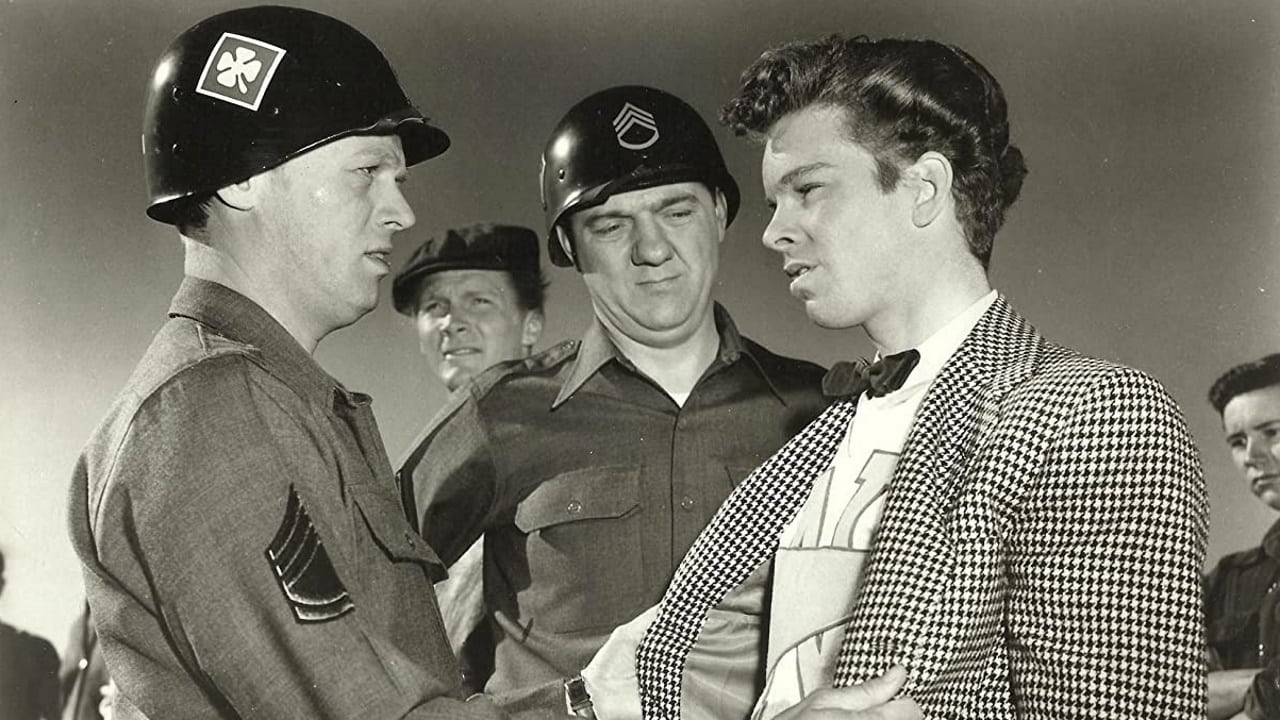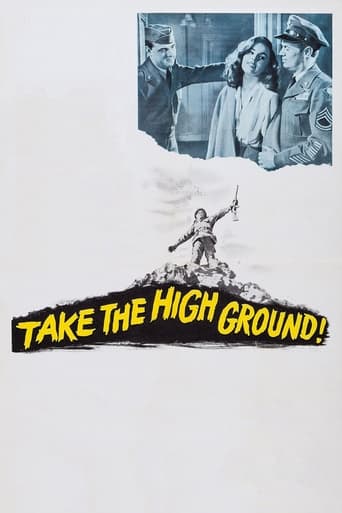

An utterly routine military film, minus anything that might distinguish it from the many other recruiting posters of the time, e.g. The DI (1957), Battle Cry (1955), et al. Except for the first few minutes of combat in Korea, the remainder is taken up with Basic Training at Fort Bliss, TX. Widmark gets the stereotypical role of an emotionally crippled drill sergeant, while Malden is wasted as his straight-arrow assistant. Third billed Stewart is the required love interest, who unfortunately is all hair and little talent. The remainder of the cast fills out the ranks of recruit trainees, with the usual array of witty or problem personalities. The movie's one notable feature turns up in the multi-racial ranks of the trainees, a relatively new updating for Hollywood.As a guy who went through Basic (at Ft. Bliss in the 60's), I have to agree with reviewer bkoganbing. Many of the incidents portrayed in the film would never have occurred in real training, especially Malden slugging Widmark in front of the trainees. But I guess the screenplay needed more action at that point. Then too, the language was really cleaned up for public viewing. I had to laugh every time Widmark benignly called the recruits "young people".What surprises me is the movie's director, Richard Brooks. How he got the job of supervising this sort of pablum is a puzzle, having built a reputation for highly serious work as a screenwriter, Brute Force (1948), Crossfire (1947), et al. Anyway, the movie is fairly typical of the sanitized type of military drama of the 1950's, before the stark realities of Vietnam sank in. (Contrast Basic Training here with it's more starkly realistic counterpart in Full Metal Jacket {1987}.) All in all, Take The High Ground is little more than a bland period curiosity.
... View MoreThe staple of war movies is the Basic Training Movie, where raw recruits are transformed from peace loving civilians into competent and capable fighting men. Thorne Ryan (Richard Widmark) and subordinate LaVerne Holt (Karl Malden) have returned from combat duty in Korea to Fort Bliss, Texas where they are assigned Drill Sargent duty. Ryan loathes his seemingly thankless task of running the recruits through uniform issue, close order drill, and rifle cleaning, preferring instead to fight communists in Korea. Ryan starts his recruits off with the proclamation, "You will never make it!" Laverne seems more content in his job and is happy to be in his station. The two then proceed to train the cross section of city boys, country boys, educated boys, goof-balls, idiots and klutzes into fighting machines.Two subplots emerge; first the meeting of Julie Mollison (Elaine Stewart), the ex-wife of a combat casualty, who it is suggested to somehow have brought about the soldier's death by her desertion of their marriage after he deployed. Ryan and Holt, nevertheless, compete for her affections. Ryan holds her with disdain at the outset, but is soon overcome by her seeming helplessness. Holt does not care to judge her at all. He accepts her as she is. Julie seems to only to like the soldier with the highest rank.The other weaker subplot involves the rivalry between Sargents, pitting Ryan against a Master Sargent who outranks him but does not have the hallowed Infantry Badge (a symbol of combat experience). There are the requisite fights and male posturing typical in military situations. The young recruits suffer exhaustion, panic, and rage at their Drill Instructors as they master the craft of soldiering. The location of the border town of El Paso provides an interesting twist in the off duty experiences of the recruits where they somehow find the only Anglo woman in the bars of Juarez while the Mexican women populate the background shots with barely any attention at all.One of the stars of the movie is the desert background of El Paso, Texas where location filming took place. The end of the movie is somewhat predictable and comes off as a recruiting tool for the U.S. Army, but as war buddy movies go this one has sufficient tension to keep most viewers entertained.
... View MoreI could tell this plot less film would go downhill from the beginning. In the opening scene we see a platoon of soldiers attacking a North Korean position, and one of them casually stops for a drink and is shot by an enemy soldier with a U.S. Army M1 rifle! That a real soldier would do this under fire, and that the props department couldn't afford an AK-47 speaks volumes about this film.Then we go to Fort Bliss for what is supposed to be boot camp but is actually a summer camp for teenagers. I say this as an Army veteran.Richard Widmark was on loan to the studio that made this film, but I think he should have remained with his contract studio, for I don't believe "Take the High Ground" was a milestone of his career.
... View MoreWhile this may not be the movie that made me want to join the Army in 1956, it may have helped. The plot is a formulaic coming of age in basic training story, turning boys into men. The personal interactions and love affairs of Widmark and Malden, the veterans of Korea who are now leading a trainng platoon at Fort Bliss, Texas, next to El Paso are also formulaic.The real value of this picture is as a time capsule. Nothing herein is BS, dreamed up, or recreated such as are Platoon, or Full Metal Jacket or Apocalypse Now, to mention some more modern highly praised but highly fictionalized films. Nor is it an anachronistic mish mash such or a low budget BW cheapie such as many of that period were.Everything shown here is as it was at the time of filming and the background extras and other military individuals were actually going through infantry training with the real possibility of going to combat in Korea when it was being made. (An amusing aspect is that the opening scene of the newly arrived trainees and the disciplined troops entraining for their new assignments were filmed on the same day with the same Southern Pacific locomotive and equipment. Yet supposedly took place three months apart.)Other time capsule films of the time are Bombers B-57, and Strategic Air Command, which prove that officially approved films can be entertaining and informative both.
... View More